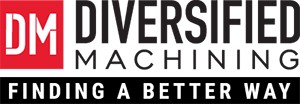Why it Needs to be a Partnership When DFM Design Efforts Are on the Table It is imperative that you...
Prototyping Custom-Machined Parts Used in DFM Projects
Five Main Questions to Answer When Facing Design for Manufacturability
Okay, so you are embarking on a redesign project for an existing product, and you need to develop and prototype a custom component, either out of metal or plastic. Where do you begin?Some questions you need to answer to help you decide: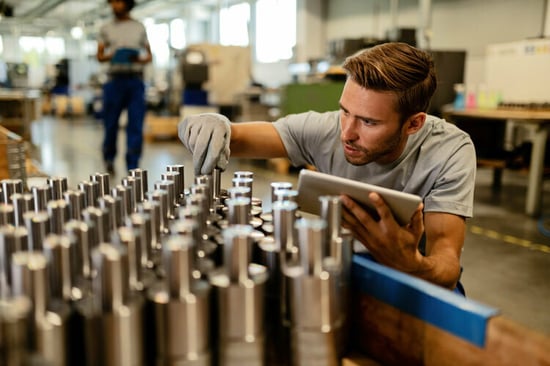
- What are the benefits of outsourcing custom machine parts when prototyping?
- Do you have the engineering resources to design and make drawings for outsourcing?
- Do you know what types of raw material you will be using to meet the specifications for the application?
- Do you have a machine shop or 3D printing partner that you trust and can use for this application?
- Is there a tight time constraint, based on your go-to-market plan for DFM?
How you answer these questions impacts your decision on how to proceed when facing design for manufacturability requirements. If you are lacking engineering design capabilities, or the ability to generate CAD drawings, you will need to collaborate with a supply chain partner who is experienced in DFM and can provide these services. The same is true with the selection of raw materials. You will want to incorporate the best raw materials for the application, while understanding the sourcing requirements, such as lead time and minimum buys.
Prototypes can be manufactured using multiple methods. The typical method is to have it custom made to the exact specifications as called out in the application. Since prototyping is an iterative process, this may require multiple prototypes to determine the exact configuration and to ensure the proper fit in the application. This process can be very expensive, and creates a significant impact on your timeline.
Another method that may be more cost effective is to have the initial parts 3D printed using an alternative, but similar, material built to the dimensional specifications. This may be a non-functional part, but can be used to determine the “fit” in the application, as well as some cosmetic considerations. This is generally referred to as a “proof of concept” prototype. Once the part is configured, possibly with multiple prototypes being developed, the final product can be custom machined using the exact materials, and built as a “working prototype” to confirm you have the proper configuration for manufacturing in volume. It is only at this time you can quote out the component for outsourcing in the projected volumes.
When considering using a custom machine shop or a 3D-printing partner, you need to understand the cost structure of doing business with them. Many larger machine shops are not incentivized to provide engineering services, as it is a drain on their internal resources, so they price these services exorbitantly to discourage growing that part of their business. With that said, many smaller shops do not have the technical engineering capabilities to assist you in raw material selection, or to provide CAD drawing capabilities, but may be willing to give you support in the building of your one-piece prototypes.
The 3D-printing house has similar potential restrictions, where they may not be able to help specify raw materials, or provide drawings. The difference is that they do normally specialize in small volume production. The other challenge with 3D printing is the evolving technology. Initial 3D capabilities were very limited in the types of material they could process. This capability is much improved, and is constantly improving as new technologies and material are developed. You can now 3D print metal, which has only been available for a few years. You need to consider material selection options when choosing a 3D-printing house with regard to the capability of their current technology. If they have not upgraded to the current offerings and technologies, they may not be able to prototype in a material that is acceptable to your application. This is very specific to the type of 3D-printing capabilities they have acquired.
The best solution for this sourcing dilemma is to partner with a machine shop or design house that has some of your requirements internally, but more importantly can help direct you in obtaining other services, available in your area, to help you complete your design for manufacturability project on time and on budget.
- What are the benefits of outsourcing custom machine parts when prototyping?
Outsourcing custom machine parts when prototyping offers several benefits, providing companies with cost-effective and efficient solutions. Here are some advantages of outsourcing custom machine parts during the prototyping phase:
Cost Savings: Outsourcing allows access to specialized machine shops with the necessary equipment and expertise, avoiding the need for significant upfront investments in expensive machinery for in-house production.
Expertise and Specialization: Machine shops that specialize in custom machining have skilled professionals who are experienced in working with various materials and processes. This expertise ensures the production of high-quality and accurate prototypes.
Advanced Machinery and Technology: Outsourcing to a machine shop often means gaining access to state-of-the-art machinery and technologies, resulting in more precise and efficient production processes.
Quick Turnaround: Specialized machine shops can often offer faster turnaround times for prototyping, helping companies accelerate their product development timelines.
Flexible Production Quantities: Outsourcing allows for flexibility in production quantities. Whether a company needs a small batch of prototypes or larger quantities for testing and evaluation, machine shops can adjust their production accordingly.
Material Selection: Machine shops often have a variety of materials readily available. Prototyping projects may require experimenting with different materials to find the most suitable one for the final product, and outsourcing facilitates this exploration.
Reduced Risk and Liability: Outsourcing shifts the responsibility of production, quality control, and compliance to the machine shop. This can reduce the risk and liability for the client company, especially during the prototyping phase.
Focus on Core Competencies: By outsourcing custom machine parts, companies can focus on their core competencies, such as design, testing, and marketing, leaving the manufacturing process to experts in the field.
Scalability: Outsourcing allows for easy scalability. As the prototyping phase progresses and adjustments are made, the production volume can be scaled up or down based on the evolving needs of the project.
Global Sourcing Options: Outsourcing provides the opportunity to tap into a global network of machine shops, allowing companies to choose suppliers based on cost, expertise, and production capabilities.
Risk Mitigation: Diversifying the supply chain by working with multiple machine shops or suppliers can help mitigate the risk associated with unforeseen challenges, such as production delays or capacity constraints.
Feedback Iteration: Outsourcing facilitates the rapid iteration of prototypes based on feedback. As changes are made to the design, machine shops can quickly produce updated parts for further testing and evaluation.
Outsourcing custom machine parts during the prototyping phase offers a range of advantages, including cost savings, access to expertise, quick turnaround times, flexibility in production quantities, and the ability to leverage advanced machinery. These benefits contribute to a more efficient and streamlined prototyping process, ultimately aiding in the development of high-quality products.
- What engineering resources does a company need to make design drawings for outsourcing machined parts work?
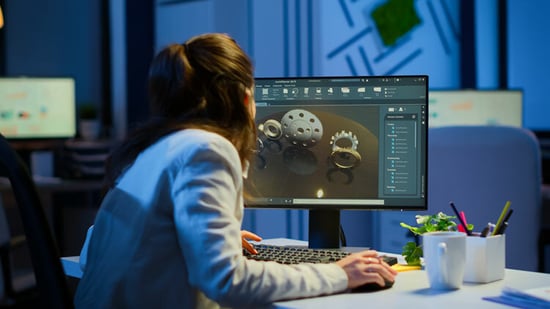
Creating design drawings for outsourcing machined parts involves several engineering resources. Here's a list of essential resources:
CAD Software: Computer-Aided Design (CAD) software is crucial for creating detailed and accurate drawings. Popular tools include AutoCAD, SolidWorks, CATIA, and Fusion 360.
Experienced Design Engineers: Competent design engineers are essential for interpreting project requirements, creating precise drawings, and ensuring designs meet the required specifications and standards.
Knowledge of Machining Processes: Engineers should have a strong understanding of various machining processes, such as milling, turning, and grinding, to design parts that are manufacturable and meet the desired specifications.
Material Knowledge: Understanding the properties and behaviors of different materials is essential for selecting the right material for the machined parts, considering factors like strength, durability, and cost.
GD&T (Geometric Dimensioning and Tolerancing): Knowledge of GD&T is vital for specifying tolerances and ensuring that machined parts meet the required dimensional accuracy.
Quality Control Measures: Implementing quality control measures in the design phase helps to identify potential issues early on, reducing the likelihood of errors during the machining process.
Communication Skills: Effective communication with both internal teams and external suppliers is crucial. Clear documentation and communication ensure that the outsourcing partner understands the design requirements.
Prototyping and Testing Facilities: Depending on the complexity of the machined parts, having access to prototyping and testing facilities can help validate the design before mass production.
Regulatory Compliance Knowledge: If the machined parts are used in industries with specific regulations (e.g., aerospace, medical), engineers must be familiar with and adhere to regulatory requirements.
Collaboration Tools: Use collaboration tools to facilitate communication and file sharing between internal teams and external suppliers, especially if they are located remotely.
By leveraging these engineering resources, a company can effectively create design drawings for machined parts, ensuring precision, manufacturability, and compliance with project specifications.
- What types of raw materials are typically used to meet machined part specifications?
The choice of raw materials for machined parts depends on the specific requirements of the part, its intended application, and the machining processes involved. Here are some common types of raw materials used to meet machined part specifications:
Metals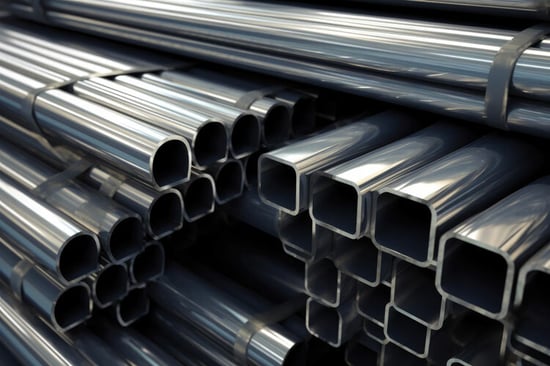
- Aluminum: Lightweight, corrosion-resistant, and suitable for various applications.
- Steel: Durable, strong, and available in different grades for specific strength and hardness requirements.
- Stainless Steel: Resistant to corrosion and staining, often used in applications requiring high hygiene or aesthetic standards.
- Brass: Known for its corrosion resistance and attractive appearance.
Alloys
- Titanium: Lightweight, high-strength, and corrosion-resistant, commonly used in aerospace and medical applications.
- Nickel Alloys: Known for their high-temperature resistance, corrosion resistance, and strength.
Plastics
- Nylon: Offers good mechanical properties, low friction, and is often used in applications requiring wear resistance.
- Acetal (Delrin): Provides high stiffness, low friction, and good dimensional stability.
- Polyethylene: Lightweight, chemically resistant, and suitable for various applications.
Ceramics
- Alumina (Aluminum Oxide): Known for its hardness, wear resistance, and electrical insulation properties.
- Zirconia: Combines high strength, toughness, and wear resistance.
Composites
- Carbon Fiber Reinforced Polymers (CFRP): Lightweight and strong, commonly used in aerospace and automotive applications.
- Fiberglass Reinforced Polymers (FRP): Offers strength, low weight, and corrosion resistance.
Exotic Materials
- Inconel: A nickel-chromium alloy known for its high-temperature resistance and corrosion resistance.
- Monel: A nickel-copper alloy with high strength and corrosion resistance.
Specialized Materials
- Tool Steels: Specifically designed for tooling applications, offering high hardness and wear resistance.
- Copper: Used for its excellent electrical conductivity in electrical and electronic components.
Heat-Resistant Alloys
- Hastelloy: Known for its corrosion resistance, especially in harsh chemical environments.
The choice of material depends on factors such as mechanical properties, thermal conductivity, corrosion resistance, weight considerations, and cost. Engineers must carefully select materials based on the specific requirements of the machined part and its intended application.
- What is the difference between a machine shop for parts and 3D printing for parts?
Machine shops and 3D printing are two different manufacturing processes, each with its own set of advantages and limitations. Below are some key differences between a machine shop for parts and 3D printing for parts.
Machine Shop for Parts
Material Variety—Metal and Plastic: Machine shops can work with a wide range of materials, including metals (such as aluminum, steel, brass, and titanium) and plastics (such as nylon, acetal, and polyethylene).
Material Properties—Strength and Durability: Machined parts often exhibit high strength and durability, making them suitable for applications with demanding mechanical requirements.
Tolerances—High Precision: Machining processes can achieve tight tolerances, ensuring precise dimensions and accurate fits.
Surface Finish—Smooth Surface: Machined parts typically have a smooth surface finish, which is important for certain applications and aesthetics.
Complex Geometries—Versatility: Machine shops can handle complex part geometries, especially those with intricate shapes or features.
Batch Production—Volume Production: Machine shops are well-suited for producing parts in larger quantities, making them economical for batch production.
3D Printing for Parts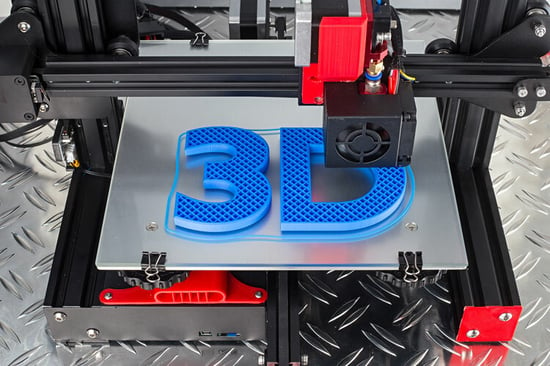
Material Variety—Plastics, Metals, and More: While traditional 3D printing (Fused Deposition Modeling or Stereolithography) mainly works with plastics, there are also metal 3D-printing technologies that can produce parts from materials like titanium, aluminum, and stainless steel.
Material Properties—Varied Properties: 3D-printed parts may have variable material properties depending on the printing technology and material used. They might be lighter but can still offer good strength.
Tolerances—Moderate Precision: 3D printing can achieve good tolerances, but they might not be as tight as those achieved through machining.
Surface Finish—Layered Appearance: The layer-by-layer deposition in 3D printing can result in a characteristic layered surface finish, which might require post-processing for smoother aesthetics.
Complex Geometries—Complexity Advantage: 3D printing excels at producing complex and intricate geometries that may be challenging or impossible to achieve with traditional machining.
Customization and Prototyping—Rapid Prototyping: 3D printing is often used for rapid prototyping, allowing for quick iteration and customization of designs.
Tooling-Free Process—No Tooling Required: Unlike machining, 3D printing does not require tooling or molds, making it advantageous for low-volume and prototype production.
Machine shops are well-suited for producing parts with high precision, tight tolerances, and a variety of materials, especially in larger quantities. On the other hand, 3D printing is ideal for rapid prototyping, customization, and the production of complex geometries, albeit with certain limitations on material properties and surface finish. The choice between the two depends on the specific requirements of the application and the characteristics of the desired parts.
- Variables that can put time constraints on go-to-market deadline when outsourcing prototyping for machined parts.
Several variables can impact the time constraints on a go-to-market deadline when outsourcing prototyping for machined parts. Understanding and managing these variables are crucial for ensuring a timely and successful product launch. Here are some key factors that can influence the timeline:
Design Complexity: Highly complex designs may require more time for programming and setup in the machining process. Ensuring a clear and well-defined design at the outset can help streamline the prototyping process.
Material Availability: Material lead times can affect the overall production timeline. Some specialized materials may have longer lead times or require additional processing, impacting the availability of raw materials for machining.
Machine Shop Capacity: The workload and capacity of the chosen machine shop play a significant role. If the machine shop is busy with other projects, it may affect the scheduling and production timeline for your prototyping job.
Tooling and Fixture Preparation: The time required to prepare tooling and fixtures for the machining process should be considered. Complex parts or specialized machining operations may need custom tooling, adding time to the overall timeline.
Prototyping Iterations: The number of iterations required for prototyping can impact the timeline. Iterative design changes may necessitate multiple prototyping cycles, extending the overall development time.
Communication and Clarifications: Effective communication with the outsourcing partner is crucial. Delays can occur if there are misunderstandings or the need for clarifications, especially in the early stages of the project.
Quality Control and Testing: Thorough quality control processes and testing can add time to the prototyping phase. While essential for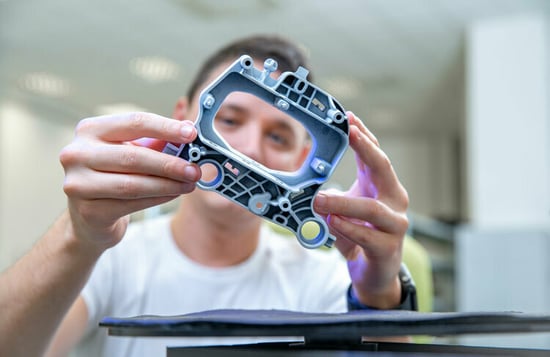 ensuring a successful product, these steps should be factored into the overall timeline.
ensuring a successful product, these steps should be factored into the overall timeline.
Shipping and Logistics: Consideration of shipping times for raw materials, prototypes, and feedback loops is essential. International shipping may have longer lead times, and delays in transit can impact the overall timeline.
Supplier Reliability: The reliability of the chosen machine shop or suppliers is critical. Delays in production or unexpected issues can occur if the outsourcing partner faces challenges or disruptions.
Regulatory Compliance: Compliance with regulatory requirements may introduce additional steps in the prototyping process. Ensuring that the prototypes meet industry standards and regulations may extend the timeline.
Document Preparation: Clear and detailed documentation is essential for the machining process. Any delays in preparing accurate specifications and drawings can impact the start of production.
Unexpected Challenges: Unforeseen challenges, such as machine breakdowns or unexpected design issues, can lead to delays. Building contingency plans for unexpected events is crucial to mitigating risks.
To manage these variables effectively, it’s important to have open communication with the outsourcing partner, set realistic expectations, and build contingency plans into the project timeline. Regular updates, clear project milestones, and a collaborative approach can contribute to a smoother prototyping process and help meet the go-to-market deadline.
Your DFM and Prototyping Source
Our team is poised to help you with the prototype that will help launch your next project. We bring decades of experience guiding DFM and NPI projects, along with our vast network of valued industry contacts. New customers become loyal ones with the level of expertise and involvement we provide as their trusted contract manufacturing partner—from prototype to DFM to full production for machined parts. We provide low- to mid-volume, assembly, lathe, and manual work. Allow our 80-plus years of collective experience in prototype and production machining, along with expertise in efficient new product development and introduction and design for manufacturability work for you. We’d love to hear from you. Contact us now to get started.
